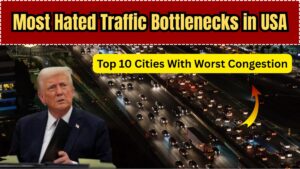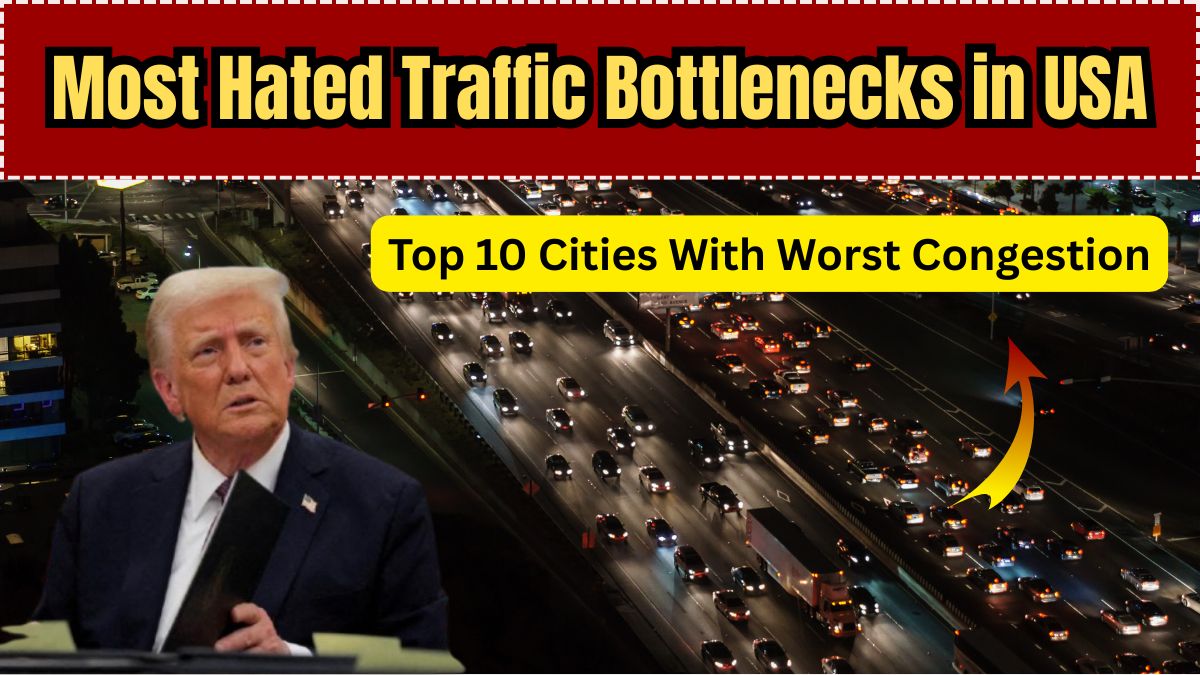As urban populations grow and infrastructure struggles to keep up, traffic congestion in the U.S. has reached critical levels in 2025. According to recent transportation studies, commuters in certain cities are spending more than 100 hours annually stuck in traffic. This article lists the top 10 worst traffic cities in the USA in 2025, highlights why congestion is worsening, and offers strategies commuters can adopt.

Traffic Trends Across the U.S. in 2025
Several trends are fueling the worsening gridlock:
-
Post-pandemic urban rebound has increased commuter traffic.
-
Inadequate public transportation systems force reliance on personal vehicles.
-
Infrastructure delays and construction backlogs continue in key cities.
-
Population growth in metro areas is outpacing road network expansions.
Top 10 Worst Traffic Cities in the USA (2025)
1. Los Angeles, CA
Still leading in traffic delays, LA drivers lose about 116 hours per year in congestion.
2. New York City, NY
NYC commuters average 112 hours annually in gridlock, especially on the I-278 and FDR Drive.
3. Chicago, IL
The Windy City experiences 105 hours per commuter, mostly due to outdated expressways and construction.
4. San Francisco, CA
Known for narrow streets and high vehicle density, drivers lose around 98 hours yearly.
5. Washington, D.C.
Federal workers and tourists contribute to 94 annual hours lost in traffic jams.
6. Atlanta, GA
Chronic bottlenecks on the I-285 and I-75 cost drivers about 90 hours a year.
7. Houston, TX
The city’s sprawling layout causes over 87 hours of lost time per commuter annually.
8. Boston, MA
Old infrastructure and compact urban planning lead to 85 hours in congestion.
9. Seattle, WA
High tech-sector population growth and limited road networks add up to 83 hours lost.
10. Miami, FL
Tourism and a booming population mean Miami drivers lose 82 hours per year on average.
Effects of Congestion on Daily Life
Traffic congestion affects:
-
Mental health: Prolonged exposure to congestion leads to stress and fatigue.
-
Work-life balance: Long commutes reduce personal and family time.
-
Economic costs: Lost productivity and fuel wastage are estimated to cost over $120 billion in 2025.
-
Environmental impact: Idling vehicles increase emissions and degrade urban air quality.
What Are Cities Doing About It?
-
Smart traffic lights and AI traffic systems are being piloted in cities like Atlanta and LA.
-
Congestion pricing is being expanded in NYC and proposed in Chicago.
-
Public transit investments are underway in Washington, D.C. and San Francisco.
Still, progress is uneven, and significant improvements may take years.
How You Can Cope With Traffic in 2025
-
Use traffic apps like Waze or Google Maps to avoid peak congestion.
-
Try flexible work arrangements, such as remote work or staggered shifts.
-
Use public transit or cycling where safe and practical.
-
Consider carpooling to reduce the number of vehicles on the road.
FAQs
What city has the worst traffic in the U.S. in 2025?
Los Angeles, California, tops the list with the highest average hours lost in traffic congestion.
How much time do American commuters lose due to traffic?
In the worst cities, commuters lose between 80 to 116 hours annually.
What causes traffic to be so bad in these cities?
The main causes include population growth, lack of public transport, infrastructure issues, and road construction delays.
Are there any solutions being implemented?
Cities are introducing AI-driven traffic systems, congestion pricing, and increasing public transport investment.
Click here to know more.
